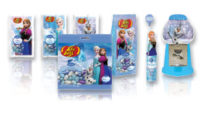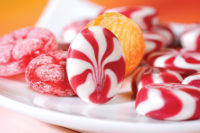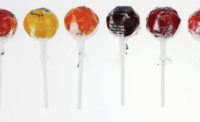Eating hard candy is a unique confectionery experience.
“Because of its long-lasting flavors, consumers often look to hard candy to add excitement during an otherwise dull or mindless activity like driving or gaming,” says Ryan Morand, brand manager, Jolly Rancher.
And demand certainly exists. Hard candy sales totaled more than $600 million in U.S. multi-outlet retailers and C-stores in 2014, according to data from IRI, a Chicago-based market research firm (@iriworldwide). It means consumers are still willing to add these sweets to their diets.
But there are challenges, of course.
“Hard candy is competing in a ring with heavyweights such as gummies, chocolates and gum,” says Jamie Maldonado, Primrose Candy. “Furthermore, candy has been demonized in the media and by health officials. The challenge is to educate consumers that candy is a treat that offers more than fleeting pleasure.”
To do so, Primrose Candy works to cater to consumers’ desires. Driven by increasingly health-conscious customers, they’re focused on creating natural, organic products with healthful benefits, such as gluten-free and GMO-free, as well as candy with fewer additives and artificial colors.
But one of their most fascinating innovations is, in fact, a reinvention of nostalgic memories.
“Back then, innovation took place domestically, where skillful grandmothers discovered the secrets behind mastering hard candy right in their kitchen,” says Maldonado. They cut rock, ribbons, bows and discs of hard candy at home.
Over the years, the tradition has remained, especially during Christmas time.
“Renewed interest in the old-fashioned candies comes from memories of their grandma’s candy dish during Christmastime,” says Maldonado. “Since switching to stand-up bags in Primrose’s ‘Grandma Mae’ line of classic Christmas candy, sales have proven that old can be the new.”
For other companies, the growing popularity of sour flavors is key.
“Consumers are increasingly looking for that flavor profile and new sweets innovations have been introduced to the market to meet that demand,” says Morand.
From Jolly Rancher, consumers can get the Fruit n’ Sour mix. Meanwhile, Bazooka Candy Brands is releasing sour flavors as well for its classic hard candies.
“There’s a lot of growth in the sour industry,” says Anthony Trani, global v.p. of marketing, Bazooka. “We’ve seen it in our own portfolio, in the success of the Juicy Drop Pop.”
The Juicy Drop Pop, released in the early 2000s, comes with a sour liquid that customers can pour onto their lollipops.
“It’s about controlling your eating experience,” says Trani. “How much sour can you handle?”
And Bazooka’s Ring Pop sours are just hitting the market as well. Trani says the excitement not only from retailers, but from consumers as well, has been incredibly strong.
Bazookahas had a long track record of success in the hard candy space. Beginning in 1977, when the brand bought Ring Pops and reinvented the lollipop by putting it on customers’ fingers, it’s been innovating with lollipops.
In the 80s, it launched the Push Pop, another fun, exciting way to eat hard candy, and then in the 90s it released the Baby Bottle Pop, which combines a lollipop with flavorful powdered candy.
And sales for Bazooka’s hard candy have always been strong, says Trani. It’s because the brand’s innovation comes from the experience surrounding the candy.
“Consumers can tend to look at hard candy and say, ‘Hard candy is hard candy is hard candy,’” says Trani. “There are only so many things you can do with them. It comes down to building the story and the experience around the candy.”
Instead of just playing around with the candy itself, Bazooka creates unique experiences around its treats. This year, it launched the Push Pop Mystery Flavor, meant to keep customers guessing as to what the pop will taste like when they unwrap it.
“It’s a white piece of hard candy, so you can’t tell what flavor it is,” says Trani. “We put it in a silver metallic package with question marks on it so you can’t tell what flavor you’re getting.”
It’s all about figuring out what’s special about the product and finding a way to communicate that to consumers. After all, manufacturers have to ensure that the product’s message and taste profile are tailored to the customers.
“If you can deliver a unique innovation, that’s how you stand the test of time,” says Trani.













